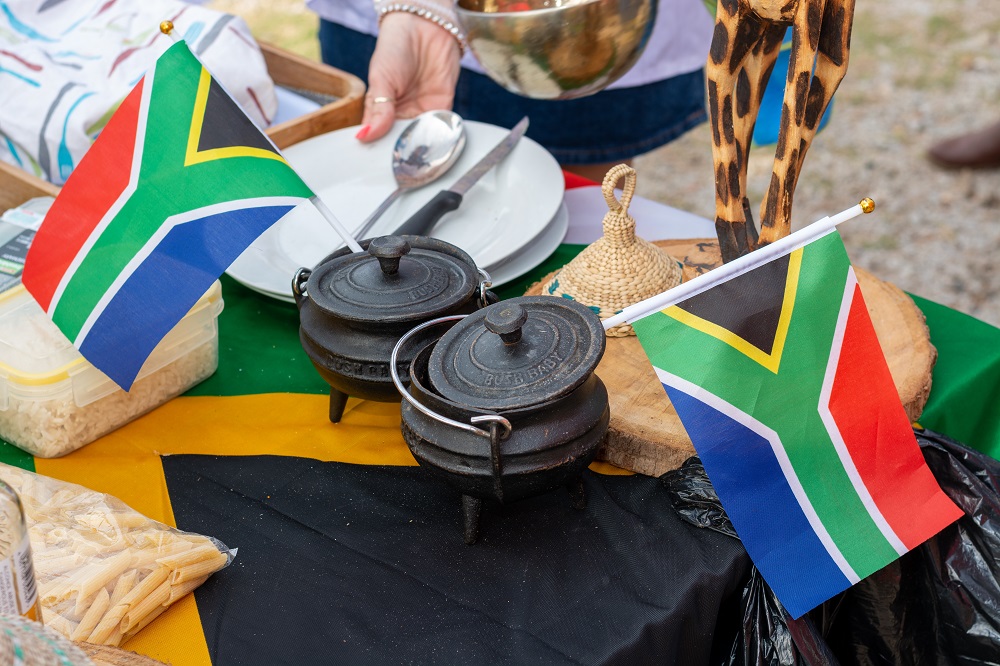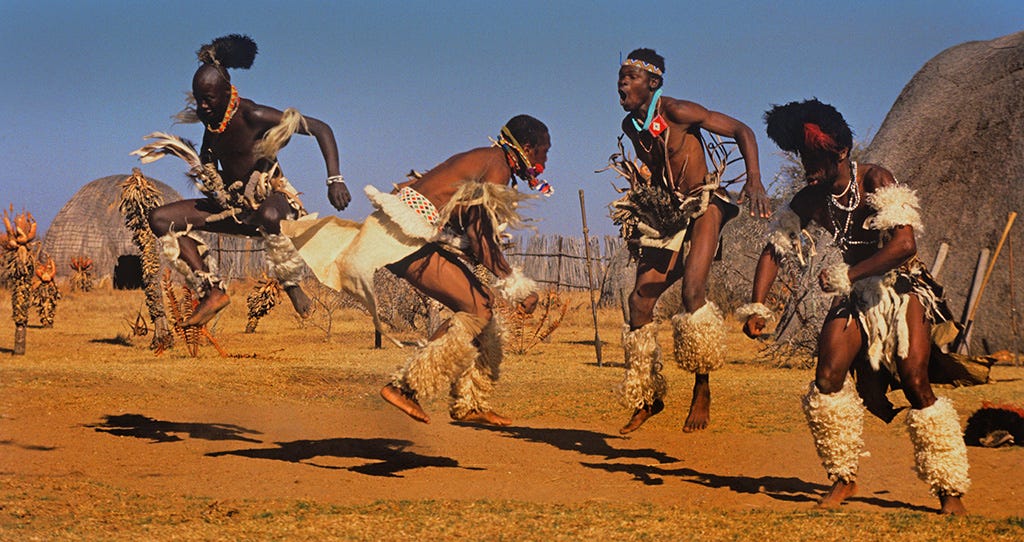Things about South African Culture Today
Things about South African Culture Today
Blog Article
Some Of South African Culture Today
Table of ContentsThings about South African Culture TodaySouth African Culture Today Fundamentals ExplainedAbout South African Culture TodayMore About South African Culture TodayThe Best Strategy To Use For South African Culture TodayUnknown Facts About South African Culture Today
This adheres to with singing and drum pounding. The couple then meet the senior citizens and discuss the importance of their union. A matter of relevance in Zambian villages is the passing away of liked ones. All participants of the town placed money, effort and time together for the burial of the deceased.Songs and dance is an extremely important aspect of the Zambian culture. The various tribal units have their very own dancing kinds; nevertheless, makishi is usual among all people.
The Buzz on South African Culture Today
When it pertains to songs, drums are made use of the most, with a range of drumming events. In Zambia, majority of the individuals are Christian; Protestant and Roman Catholic. There are small groups of Muslims and Hindus, with the remainder complying with neighborhood indigenous tribal ideas.

South African heritage and society is profoundly diverse, and includes numerous various teams of people that each have their very own traditions and ideas. Having such a diversity of individuals and societies is what makes South Africa so one-of-a-kind. In truth sense of the expression, we are a rainbow country.
South Africa has approximately 3 hundred thousand Portuguese people staying in it. Making it the 7th on the listing of countries with one of the most Portuguese people in it beyond Portugal. Portuguese is not only a society, however it is additionally a language and a race. Portuguese people stem from the country of Portugal in Europe, nevertheless, due to Portugal (like lots of other nations in Europe) checking out the globe and conquering other nations throughout the 15th 20th centuries, South Africa has what we call Portuguese South African's living in it.
Our South African Culture Today PDFs
Amongst the popular features of the topography is a plateau that covers practically two thirds of the center of the nation. The plateau facility rises toward the southeast, where it climaxes in the Drakensberg range, component of a cliff that divides the plateau from the seaside locations. The Drakensburg consists of Sparkling wine Castle, the highest top in the country.
The region north of the Witwatersrand, called the bushveld, slopes downward from east to west toward the Limpopo River, which develops the worldwide border. The western section of the plateau, the middleveld, also descends in the direction of the west and differs in altitude in between the highveld and bushveld. Between the Drakensburg and the eastern and southern shoreline, the land descends to the sea.
Nearer the coastline there is a low-lying plain called the eastern lowveld. Southwest of the plateau the country becomes progressively more arid, paving the way to the hostile desert of the Great Karroo, verged on the eastern by the reduced, much better sprinkled plateau of the Little Karroo. Separating the dry southerly inside from the sandy coastal of the southerly shore and West Cape is another range, the Langeberg.
Not known Details About South African Culture Today
The country's racially, ethnically, and politically separated background has actually produced national and subnational signs that still work as icons of the country, and others icons that are approved only by particular groups. The monuments to white inhabitant conquest and political prominence, such as the Afrikaner Voortrekker ("pioneer") Monolith in Pretoria and the Rhodes Monument recognizing the British colonial empire builder and Cape head of state Cecil Rhodes, remain sectarian symbols.
The first modern-day inhabitants were the San ("bushman") hunter-gatherers and the Khoi ("Hottentot") peoples, that herded animals (South African culture today). The San might have been existing for thousands of years and left proof of their existence in hundreds of read the full info here ancient cave paints ("rock art"). Bantu-speaking clans that were the forefathers of the Nguni (today's amaZulu, amaXhosa, amaSwazi, and vaTsonga individuals) and Tswana-Sotho language groups (today's Batswana and Southern and Northern Basotho) moved below east Africa as early as the fifteenth century

Both previous republics of the Orange Free State and Transvaal (South African Republic) were developed by Afrikaner inhabitants who beat and dispossessed the Basotho and Batswana. Lesotho would have been by force integrated into the Orange Free State without the extension of British security in 1869. The supreme unification of the country resulted from the South African War (18991902) in between the British and Web Site the two Afrikaner republics, which reduced the country to ruin at the start of the twentieth century.
Afrikaners historically considered themselves the only true South Africans and, while providing complete citizenship to all citizens of European descent, denied that status to people of shade up until the democratic shift of 1994. British South Africans preserve a sense of cultural and social link to Great Britain without damaging their identification as South Africans.
The Buzz on South African Culture Today
The diversity and fragmentation within ethnic groups and the balance of stress between those teams during the twentieth century prevented interethnic civil problem. While intergroup tensions over sources, privileges, and political prominence continue to be, those conflicts are as most likely to pit Zulu versus Zulu as Zulu versus Xhosa or African against Afrikaner.
From colonial India, British sellers and administrators brought the bent steel decorative roofings and slender lace job pillars that still typify the terraces of cottages arounds and cities throughout the nation. Holy places contribute a crucial building aspect also in the tiniest towns. Along with the rising steeples and timeless stonework of Afrikaans Dutch Reformed churches, Anglican churches, synagogues, mosques, and Hindu shrines supply selection to the religious architectural scene.

Slaughtering and the developing of standard cereal beer are important in securing the engagement and goodwill of the forefathers that are considered the guardians of good luck, prosperity, and health. Indian areas maintain their indigenous cooking practices and use them on Islamic and Hindu ritual and ceremonial celebrations. Afrikaners and Coloured individuals collect at weekends and special celebrations my company at multifamily bbqs called braais, where community bonds are strengthened.
Due to the fact that this was the key financial business of both black Africans and white colonists, problem between those groups fixated the ownership of grazing land and livestock. In 1867, the largest ruby down payments on the planet were found at Kimberley in the west central location. The riches from those fields assisted finance the exploitation of the greatest gold coral reef on the planet, which was discovered on the Witwatersrand in 1886.
Things about South African Culture Today
This caused misunderstandings and calculated misstatement in the dealings of white inhabitants and government authorities with African chiefs throughout the early american period (South African culture today). In the facility of African gets, some aspects of common and primarily "tribal depend on" land tenure were protected, and also in white backwoods, types of communal tenure were still exercised in locations with African communities
After the democratic makeover of 1994, programs for land restitution, redistribution, and reform were instituted, yet progress has been sluggish. The white minority still regulates eighty percent of the land. In the wake of agricultural land intrusions in Zimbabwe, the Division of Land Affairs has promised to speed up land redistribution.
Report this page